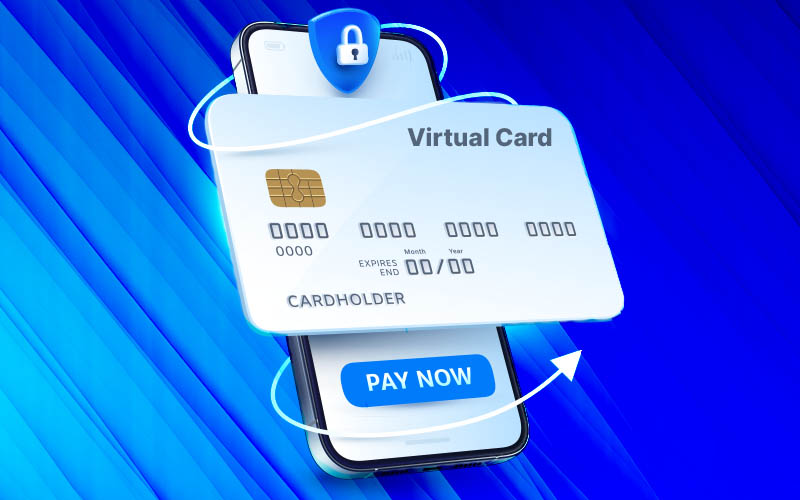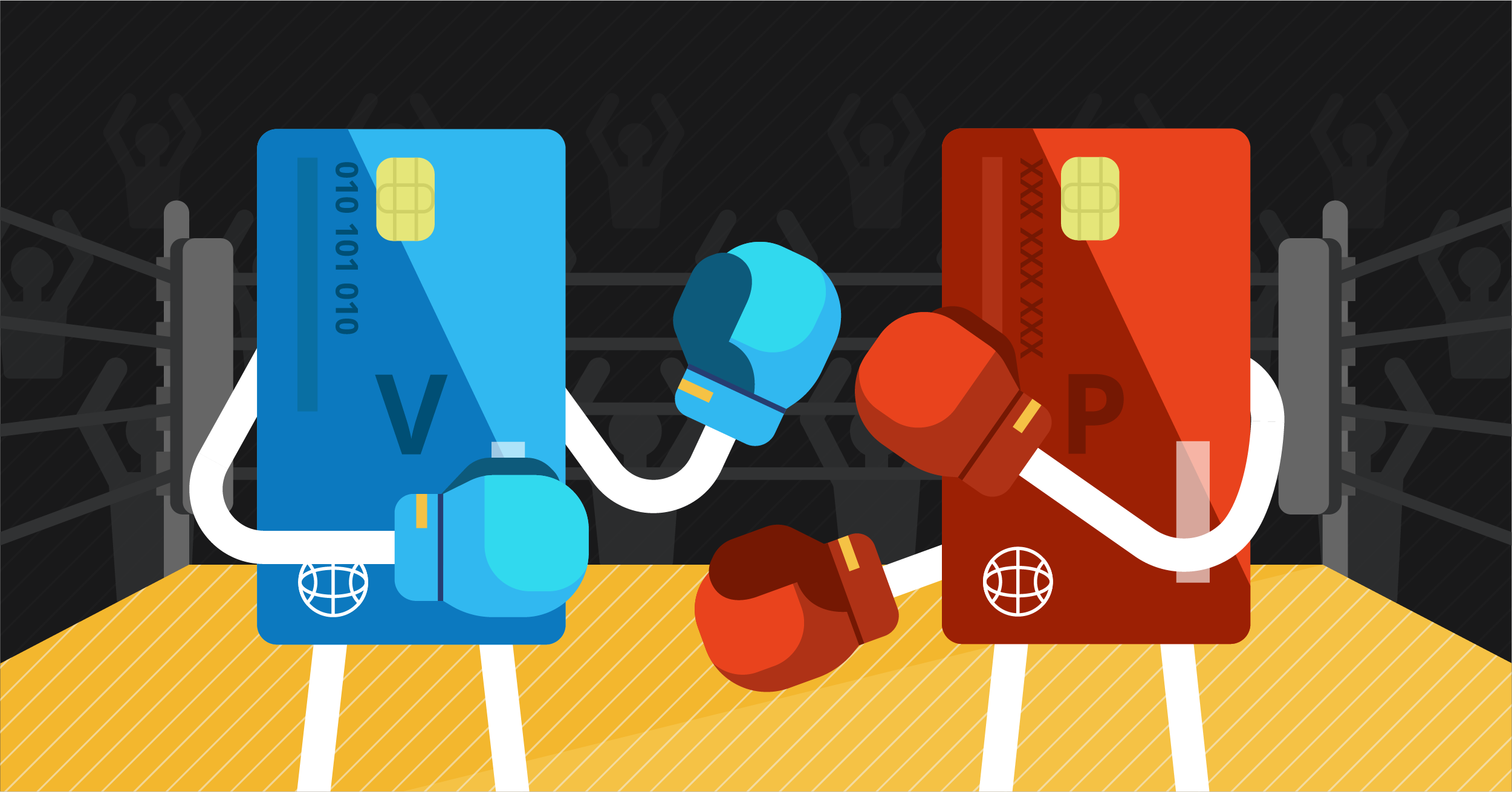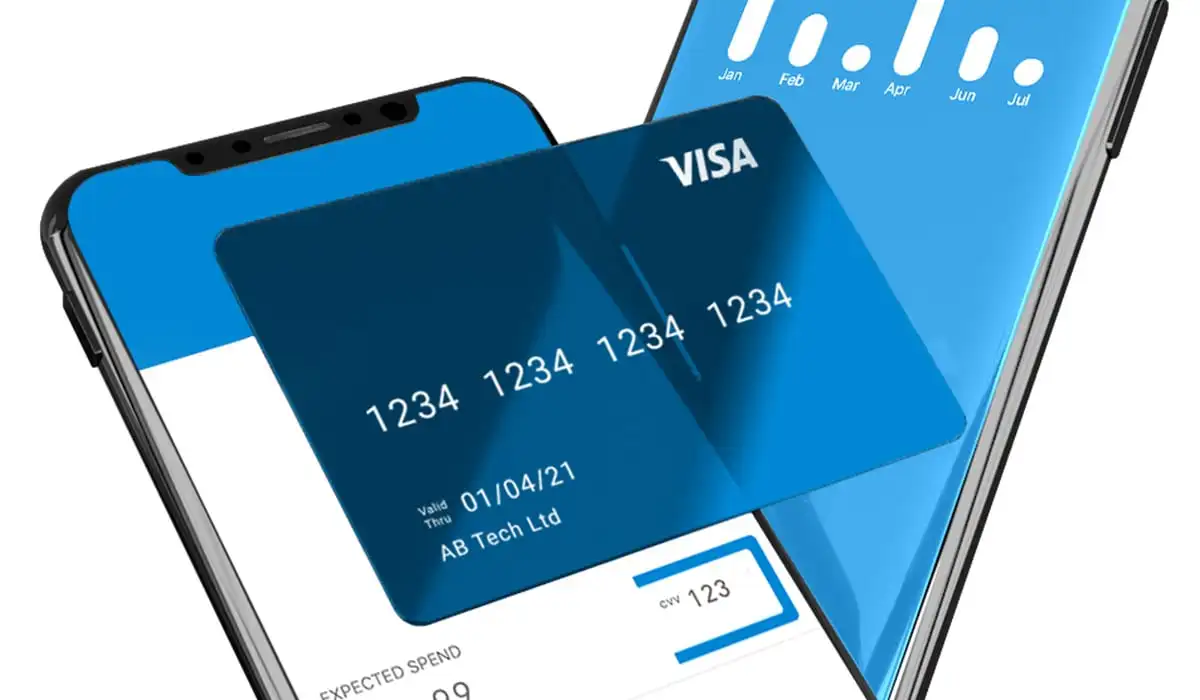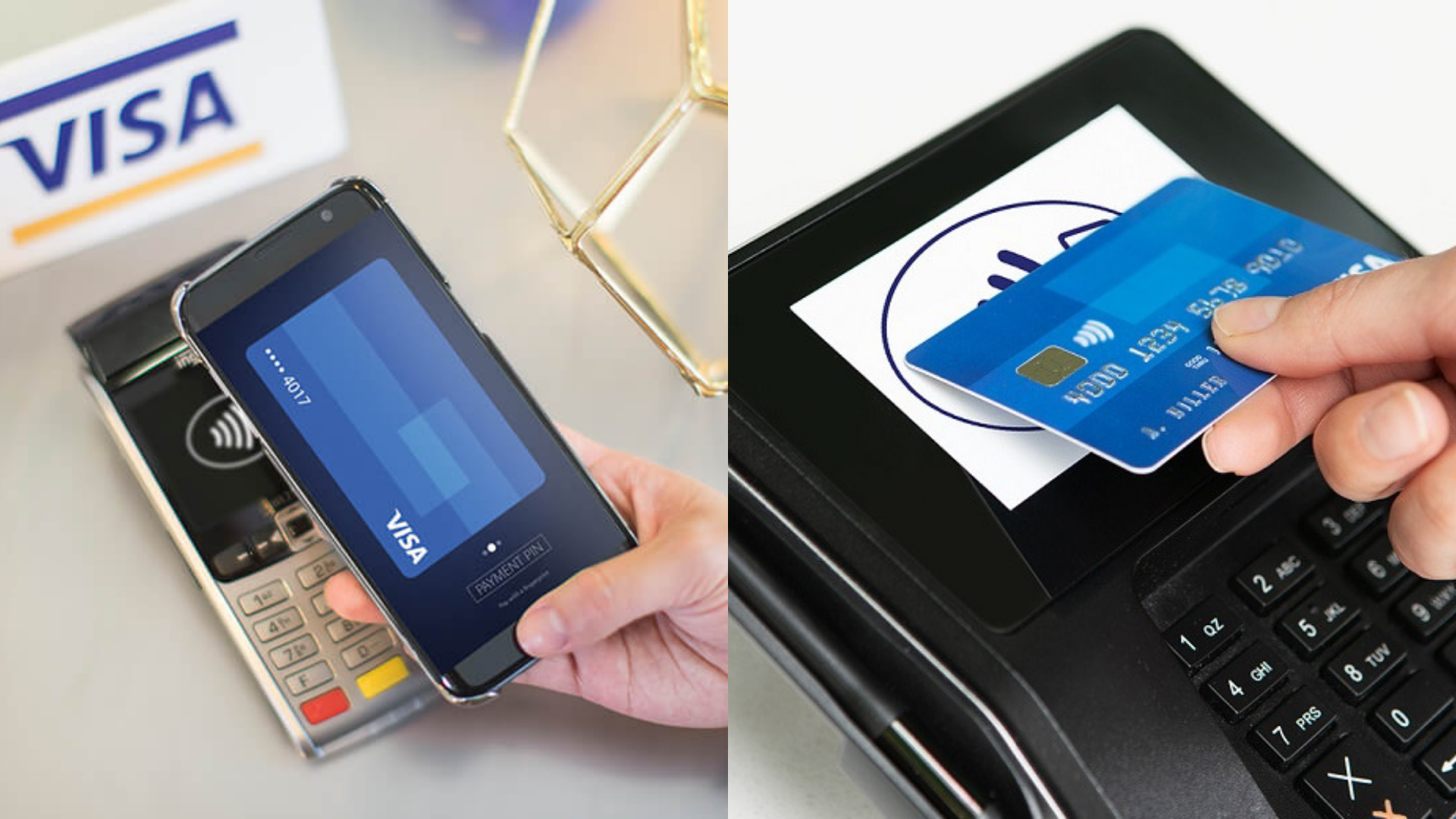Introduction
In the latest increasingly more digital global, the man in which in which ner we cope with monetary transactions is evolving rapidly. Traditional bodily playing cards, that have been a staple in our wallets for many years, are sharing the highlight with a more recent, more technologically advanced choice: virtual playing cards. Understanding the differences among those playing cards is vital for making informed choices about your monetary safety and convenience.
Virtual playing cards are digital counterparts to bodily playing cards. They exist completely in digital shape and are typically issued through economic establishments or fintech businesses. These playing cards are frequently used for online transactions, offering safety via generating temporary card numbers that may prevent unauthorized use.
The alternative cards are the traditional credit or debit cards that most humans are acquainted with. These tangible cards are extensively used for online and in-keep purchases, ATM withdrawals, and other economic sports. They provide the gain of being without problems handy for everyday use.
The motive of this weblog is to examine and assess virtual cards and bodily playing cards, analyzing their advantages and downsides to help you determine which alternative is probably more perfect for your needs. Whether you prioritize security, convenience, or price-effectiveness, this complete evaluation will guide you in making the excellent desire in your monetary transactions.
Visit Our Website: BHWCard.Com

Section 1: Overview of Virtual Cards
Definition and Explanation
What are virtual playing cards?
Virtual playing cards are virtual variations of credit score or debit cards. Unlike bodily playing cards, virtual playing cards exist handiest in digital form and are commonly issued through banks, credit card groups, or fintech systems. They come with a unique card range, expiration date, and CVV code, just like physical cards, but are designed mainly for online use.
How do virtual cards paintings?
Virtual playing cards function with the aid of generating transient card numbers that hyperlink again to your primary credit score or debit account. When you are making a purchase, the digital card quantity may be used much like a traditional card variety. This temporary variety regularly has a restricted lifespan or a usage restriction, adding a further layer of protection. Some digital cards additionally assist you in setting spending limits or restricting usage to specific traders, enhancing the management of your monetary transactions.
Common Uses
Online Shopping
Virtual playing cards are particularly famous for online shopping. They provide a steady way to make purchases without exposing your number one card info, reducing the danger of fraud.
Subscription Services
For ordinary payments like subscriptions to streaming offerings, software, or other month-to-month memberships, virtual playing cards offer a convenient and safe option. You can without problems control and monitor these payments via your virtual card account.
Secure Transactions
Due to their enhanced protection functions, virtual playing cards are best for transactions where security is a problem. The temporary nature of the cardboard numbers minimizes the danger of unauthorized entry and misuse.
Advantages
Enhanced Security Features
Virtual playing cards offer an extra layer of protection by producing transient card numbers for every transaction. This reduces the chance of your card info being stolen or compromised in data breaches. Some digital cards also let you freeze or delete the cardboard quantity after purchase, in addition to improving security.
Convenience and Ease of Use
Setting up and the use of virtual playing cards is typically short and straightforward. Many banking apps and fintech services offer clean-to-navigate interfaces for producing and coping with virtual cards. This comfort makes virtual cards a favored preference for tech-savvy users and those who often shop online.
Environmental Benefits
Since virtual playing cards do not require bodily manufacturing, they contribute to decreasing plastic waste. This eco-friendly thing makes them an appealing alternative for environmentally conscious customers.
Disadvantages
Limited Acceptance in Some Physical Stores
While digital cards are best for online transactions, their use in physical shops is frequently constrained. They usually cannot be utilized in locations wherein a physical card swipe or chip insert is needed unless integrated into digital wallets like Apple Pay or Google Pay.
Dependence on Digital Devices and Internet Access
Virtual cards rely upon internet access and virtual gadgets for their issuance and control. This dependence can be a drawback for folks that no longer have constant net entry to or select no longer to apply virtual systems for economic transactions.
In summary, digital cards provide better protection, convenience, and environmental benefits, making them a superb preference for online shoppers and tech-savvy consumers. However, their confined recognition in physical stores and reliance on virtual get-entry are elements to recall while figuring out if virtual cards are the proper healthy for your financial wishes.
Section 2: Overview of Physical Cards
Definition and Explanation
What are physical cards?
Physical playing cards are tangible, plastic cards issued using banks, credit score card agencies, or other financial establishments. These cards typically have a magnetic stripe, an embedded chip, and a visible card number, expiration date, and CVV code. They are designed for both in-person and online transactions and are widely recognized and customary globally.
How do physical playing cards work?
Physical playing cards work by being swiped, dipped, or tapped at a point-of-sale (POS) terminal or inserted into an ATM. When you are making a transaction, the card’s statistics are studied via the terminal and processed through the price network to complete the transaction. The chip or magnetic stripe holds essential information that permits the transaction to be authenticated and authorized.
Common Uses
In-shop Purchases
Physical playing cards are predominantly used for in-person transactions at retail stores, eating places, and different physical locations. They provide a convenient manner to make purchases without the want for cash.
ATM Withdrawals
Physical playing cards are essential for retreating cash from ATMs. By placing your card and getting into your PIN, you may get admission to your bank account and withdraw money as wished.
General Everyday Spending
For normal costs together with groceries, gasoline, eating, and enjoyment, bodily playing cards offer a truthful charge method. They are normally used for small and large transactions.
Advantages
Widely Accepted Everywhere
One of the number one blessings of physical cards is their substantial reputation. They may be used nearly anywhere, from neighborhood shops to global destinations, making them a reliable choice for everyday transactions and journeys.
No Need for Internet or Digital Devices
Physical playing cards do now not require an internet connection or a virtual tool to be used. This makes it convenient for people who might not have steady internet to get the right of entry or decide on traditional fee techniques.
Tangibility and Ease of Access
Having a physical card in your pocket offers a tangible experience of protection and accessibility. It’s smooth to hold and use, providing immediate admission to funds without relying on digital structures.
Disadvantages
Higher Risk of Loss or Theft
Physical playing cards may be lost or stolen, which poses a considerable chance. If not pronounced directly, a misplaced or stolen card can result in unauthorized transactions and potential financial loss.
Physical Wear and Tear Over Time
Over time, bodily playing cards can be afflicted by put and tear, such as damage to the magnetic stripe or chip. This can result in difficulties in making transactions and may require the card to be replaced periodically.
In precis, bodily playing cards are a flexible and extensively widespread charge method that offers ease of use without the need for digital gadgets or internet get entry to. However, they come with dangers along with loss, robbery, and physical degradation, which users need to manipulate carefully. Understanding these elements can help you decide whether or not bodily playing cards align with your financial behavior and needs.
Visit Our Card: BHWCard.com/Shop/

Section 3: Security Comparison
Virtual Cards
Dynamic CVV Codes and Temporary Card Numbers
One of the key security capabilities of digital cards is using dynamic CVV codes and temporary card numbers. Each time you are making a transaction, a brand new CVV code may be generated and the card variety used may be distinctive from your real card variety. This dynamic issue substantially enhances safety, as it prevents unauthorized use of your card info although they may be compromised. Temporary card numbers can be set to run out after an unmarried use or after a positive period, adding a further layer of safety.
Reduced Risk of Cloning and Skimming
Virtual playing cards are inherently extra secure towards cloning and skimming. Since they no longer have a bodily presence, they can not be cloned or skimmed using conventional strategies that concentrate on the magnetic stripe or chip of physical cards. Online fraudsters could discover it notably tougher to misuse virtual card information, specifically with the introduced protection of temporary numbers and dynamic CVVs.
Physical Cards
Vulnerability to Theft and Physical Damage
Physical playing cards are at risk of robbery and loss. If a physical card is stolen, the thief can doubtlessly use it to make unauthorized purchases until the cardholder reviews the loss and blocks the cardboard. Additionally, physical playing cards can suffer from put and tear through the years, which can also affect the functionality of the magnetic stripe or chip, leading to difficulties in transactions.
Potential for Skimming at ATMs and POS Terminals
Physical playing cards also are susceptible to skimming, a method where fraudsters use hidden devices at ATMs or POS terminals to capture card statistics. These statistics can then be used to create cloned playing cards for fraudulent transactions. Despite advancements in protection technology, including EMV chips, skimming remains a big threat to bodily card customers.
Conclusion
When evaluating the safety of digital cards and bodily cards, virtual cards have a clear facet due to their dynamic and brief nature. The use of converting CVV codes and transient card numbers appreciably reduces the chance of unauthorized use, cloning, and perusing. Physical cards, at the same time as convenient and widely accepted, face demanding situations associated with theft, physical damage, and browsing. For users prioritizing security, virtual playing cards provide an improved solution, especially for online transactions and situations where card details want to be protected against fraud.
Section 4: Convenience and Accessibility
Virtual Cards
Instant Issuance and Activation
One of the standout functions of digital cards is their instantaneous issuance and activation. Unlike bodily playing cards, which might also take days or maybe weeks to arrive via mail, virtual cards may be generated and activated straight away via your bank’s app or online platform. This makes them particularly convenient for urgent purchases or when a brief fee solution is wanted.
Easy Management Through Apps and Online Platforms
Virtual playing cards are designed with virtual comfort in thoughts. They can be without problems controlled via cell apps or online structures furnished by way of your financial institution or financial group. This includes functions like setting spending limits, freezing or deleting cards, and viewing transaction histories in real time. The ease of control provides a layer of control and flexibility this is particularly appealing for tech-savvy users.
Physical Cards
Physical Presence Required for Certain Transactions
While bodily cards are universally conventional, they often require your bodily presence for transactions, along with swiping, putting, or tapping at a point-of-sale terminal. This can be an obstacle if you forget your card at domestic or if you want to authorize a transaction remotely. However, physical cards excel in situations wherein virtual bills aren’t a choice, consisting of cash withdrawals at ATMs.
Need for Replacement When Lost or Damaged
Physical cards, via their nature, are susceptible to being lost, stolen, or broken. In such cases, you need to contact your bank to issue an alternative, which can take several days to arrive. During this era, you may face inconveniences due to the dearth of get right of entry to your funds. Additionally, bodily wear and tear over the years can necessitate card replacements, adding to the hassle.
Conclusion
In phrases of comfort and accessibility, digital cards provide widespread blessings with their immediate issuance, clean management, and flexibility. They are perfect for individuals who decide on a brief, digital-first approach to coping with their price range. On the other hand, bodily playing cards, even as requiring physical presence for positive transactions and being beichallengednge to loss and damage, are widely widespread and provide a tangible, reliable method of fee. Users who price immediacy and virtu manipulation can also lean toward virtual cards, whereas individuals who decide on conventional, universally ordinary methods might opt for bodily cards.
Section 5: Cost and Fees
Virtual Cards
Potential Lower Costs Due to Lack of Physical Production
One of the giant benefits of digital cards is their potentially lower value. Since there may be no want for physical production, transport, or management, monetary institutions frequently stoat the fees associated with issuing traditional plastic playing cards. These savings can every so often be surpassed directly by customers in the form of reduced costs or no prices at all for acquiring a virtual card.
Possible Fees for Certain Transactions or Services
While digital playing cards can be highly-priced in phrases of issuance, they might nevertheless include charges for precise transactions or offerings. For example, there are probably charges for foreign money conversions, global transactions, or positive types of purchases. Additionally, a few providers may impose charges for capabilities like putting in place multiple virtual playing cards or preserving the account if it’s tied to a top-rate carrier.
Physical Cards
Costs Associated with Production and Replacement
Physical playing cards include inherent fees because of their production, which includes the materials, manufacturing procedure, and shipping. These costs are generally borne by way of the issuing monetary group however can every so often be pondered inside the fees charged to the cardholder. Additionally, if a bodily card is lost, stolen, or damaged, there can be charges associated with issuing an alternative card. This system also entails a waiting length, at some point which the cardholder may be without a card.
Possible Annual Fees and Transaction Charges
Many bodily playing cards include annual prices and special top-rate credit scorecards that offer rewards, journey benefits, or other perks. These expenses can vary considerably based on the cardboard kind and the blessings supplied. Moreover, physical cards can also incur transaction fees, such as costs of coin advances, balance transfers, foreign transactions, and occasionally even for using cardboard at certain merchants. These charges can upload up, impacting the general fee of maintaining a bodily card.
Conclusion
When considering value and fees, digital playing cards frequently have the brink due to the absence of bodily manufacturing charges and potential decreased issuance costs. However, it’s important to be aware of any precise transaction or service fees that would follow. On the other hand, physical cards include manufacturing and alternative expenses, as they regularly bring annual costs and various transaction prices. Consumers should carefully examine those prices and fees to decide which kind of card gives excellent value based on their usage patterns and monetary needs.
Visit Our Website: BHWCard.Com

Section 6: Use Cases and Suitability
Virtual Cards
Ideal for Frequent Online Shoppers and Digital Nomads
Virtual cards are proper for those who make frequent online purchases. Their superior security features, consisting of transient card numbers and dynamic CVV codes, provide an additional layer of safety against fraud, making them ideal for online shopping. Additionally, virtual nomads and those who tour often can enjoy the convenience of virtual playing cards, as they can be managed entirely online without the want to hold physical playing cards, which can be lost or stolen during the tour.
Best for Those Prioritizing Security and Convenience
For customers who prioritize ze security and convenience of their financial transactions, digital cards are an incredible choice. The capacity to generate new card numbers for different transactions reduces the danger of card statistics being compromised. Furthermore, the ease of coping with these cards through mobile apps and online structures allows users can fast and effectively manage their spending, set limits, and display their transactions in real-time. This degree of management and security is particularly treasured for tech-savvy individuals who decide on a digital-first approach to their price range.
Physical Cards
Suitable for Individuals Who Prefer In-Person Transactions
Physical cards remain rather suitable for folks who often have interaction in in-person transactions. Whether it’s shopping at local shops, eating at eating places or making purchases at physical factors of sale, the big acceptance of bodily playing cards makes them exceedingly versatile. They are also important for transactions that require a physical presence, inclusive of ATM withdrawals, where a digital card might now not suffice.
Best for People Who Need Widespread Acceptance and Accessibility
For individuals who were universally customary charge method, bodily playing cards are rather a nice alternative. They may be used certainly anywhere, from small local vendors to massive global outlets. Physical playing cards do not require internet access or a digital device to function, making them reachable to each person, consisting of people who may not be snug with or have access to digital banking solutions. Additionally, the tangibility of a physical card provides a sense of protection and reliability for plenty ty users.
Conclusion
When it comes to applying cases and suitability, digital cards excel for people who regularly go online, travel often, and prioritize security and convenience. Their digital nature makes them flexible and clean to manipulate, catering to the desires of tech-savvy customers. On the other hand, physical playing cards are integral for people who opt for in-man or woman transactions and require a universally established payment approach. They offer the tangibility and reliability that many customers cost, making them a staple for regular financial sports. Understanding your personal preferences and way of life lets you determine which kind of card first-rate fits your desires.
Section 7: Future Trends
Technological Advancements
Innovations in Virtual Card Technology
The future of digital cards is poised to gain from non-stop technological improvements. Innovations along with superior artificial intelligence and machine mastering algorithms are set to enhance fraud detection and prevention, making virtual cards even greater steady. Additionally, the integration the the of blockchain era should provide new ranges of transparency and security in transactions. Biometric authentication, which includes fingerprint or facial recognition, may additionally end up fashionable, in addition to safeguarding digital card use. As technology evolves, virtual cards will likely end up more state-of-the-art and consumer-friendly, cementing their vicinity within the digital fee landscape.
The Potential Shift Towards a Cashless Society
The international fashion in the direction of a cashless society is accelerating, pushed with the aid of the ease and efficiency of digital charge techniques. Virtual playing cards play a massive position in this shining of imparting an unbroken way to make stimmediatetely payments without the need for bodily cash. As more groups and consumers undertake virtual payment solutions, the reliance on coins is anticipated to decrease. Governments and economic institutions also are helping this transition by way of developing virtual currencies and selling electronic charge infrastructures. This shift is likely to cause broader popularity and utilization of digital cards, similarly integrating them inday-by-day day financial transactions.
Consumer Preferences
Trends in Consumer Behavior Towards Card Usage
Consumer behavior is increasingly leaning closer to virtual solutions for economic transactions. The convenience, speed, and safety of virtual playing cards are using this modification. More purchasers have become snug with online banking and digital wallets and prefer the benefit of using use and better manipulation te these technologies. Younger generations, mainly, are short to adopt digital playing cards due to their familiarity with digital ecosystems. This trend is predicted to continue, with virtual cards becoming a favored approach for numerous styles of transactions, from everyday purchases to huge financial commitments.
Increasing Reliance on Digital Financial Solutions
As virtual monetary solutions become greater including our lives, reliance on conventional banking methods is decreasing. Mobile banking apps, digital wallets, and virtual playing cards are growing a comprehensive virtual economic surroundings. This shift is not handiest about convenience but also about providing more advantageous protection and higher control the of budget. The upward thrust of fintech companies is in addition fueling this reliance with the aid of supplying innovative answers that project conventional banking. Consumers are increasingly trusting those virtual systems to manipulate their money, make transactions, and provide financial advice. This developing reliance on digital monetary answers suggests a vibrant destiny for virtual playing cards, positioning them as a valuable factor of current economic management.
Conclusion
The destiny tendencies in payment techniques imply a widespread shift in the direction of virtual and virtual answers. Technological improvements will beautify the security and functionality of virtual playing cards, making them extra attractive to consumers. The flow toward a cashless society and the evolving client preferences in the direction of digital financial answers will further solidify the role of virtual cards in regular transactions. As these tendencies broaden, both individuals and businesses will need to adapt to the converting landscape, embracing the advantages that virtual playing cards provide in terms of comfort, safety, and efficiency.
Conclusion
In this comprehensive exploration of digital playing cards versus physical cards, we’ve delved into their respective functions, benefits, and downsides. Let’s recap the key points and weigh the pros and cons to offer a balanced attitude for readers to consider primarily based on the character’s wishes and preferences.
Recap of Key Points
- Virtual Cards: These virtual counterparts offer more desirable security capabilities, instantaneous issuance, and clean management through apps and online structures. They are perfect for frequent online shoppers, virtual nomads, and people prioritizing protection and comfort.
- Physical Cards: Traditional plastic playing cards are universally familiar and offer a tangible manner of payment. While they will lack some of the security capabilities of virtual cards, they excel in individual transactions and provide a sizeable reputation and accessibility.
Weighing the Pros and Cons
- Virtual Cards: Pros consist of more advantageous safety, immediate issuance, and handy management. However, they’ll have restricted recognition in some bodily shops and require net entry to be used.
- Physical Cards: Advantages include giant attractiveness and accessibility, in addition to the reliability of individual transactions. On the drawback, they’re vulnerable to theft and t, physical harm, and can incur production and replacement expenses.
Providing a Balanced Perspective
The preference between virtual and physical playing cards ultimately relies upon individual needs and eventualities:
- For Security and Convenience: Virtual cards offer unheard-of protection capabilities and easy control, making them a top preference for online consumers and people prioritizing virtual convenience.
- For Universal Acceptance and Accessibility: Physical playing cards stay the go-to option for transactions where virtual fee techniques are not possible or ordinary. They provide a tangible, dependable means of paymethathis is universally recognized.
Encouragement to Consider Personal Preferences
As readers ponder their preference among digital and physical cards, it’s essential to take into account private choices, way of life, and usage patterns. Whether prioritizing security, comfort, or commonplace recognition, knowledge of one’s financial behavior and needs will guide the decision-making method.
In conclusion, each digital and bodily cards provide precise advantages and caters to exceptional alternatives and situations. By comparing the pros and cons and considering man or woman needs, readers can make an informed choice that aligns with their monetary dreams and lifestyle.
Visit Our Card: BHWCard.com/Shop/

Call to Action
As you recall the choice among virtual and bodily playing cards for your economic transactions, we invite you to do so:
Share Your Experiences: Have you used virtual or physical cards in your day-to-day existence? We’d like to listen to your stories and insights. Share your thoughts in the remarks phase below and be part of the communique with our community.
Subscribe for More Insights: Stay up to date on the latest developments and tendencies in monetary generation and safety via subscribing to our weblog. Receive normal insights, guidelines, and analyses straight in your inbox, empowering you to make informed choices about your budget.
Thank you for studying, and we will continue the discussion with you!
